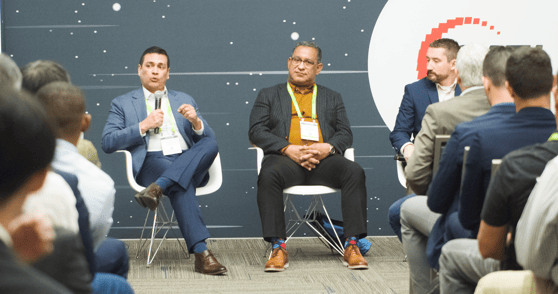Changes brought about by electrification of transportation and home heating, along with a rise in distributed energy resource integration will challenge the stability of the power grid over the next decade. How utilities are responding to these changes topped the discussions at DISTRIBUTECH 23.

In a panel featuring experts from National Grid, Southern California Edison and Landis+Gyr, speakers addressed the role of grid-edge technology in load balancing, remote management of resources and engaging consumers in the process.
Nate Boyce, Director of Business Design and Integration at National Grid, said utilities will need to be innovative and take that innovation to every customer. The old way of bringing AMI data back to a head-end system and running it through analytics engines “just isn’t quick enough to respond to the challenges electrification brings,” he said. Boyce, who owns the end-to-end AMI processes at the utility, added, “We have to understand the impact of certain loads, and what consumers are generating, in real time.”
Greg Sheran, a Consulting Engineer at Southern California Edison, referenced the impact on the utility of all-new construction being solar ready. He is overseeing technology pilot projects, including one of the new 43S form multiport-meter, to bring simplicity to the integration and increased control at the grid edge to allow islanding and new forms of load management and energy storage.

John Romero, Vice President of Electric Vehicle Solutions at Landis+Gyr, remarked that the future needs of distribution utilities, in regard to supporting EV adoption, center on planning for resource adequacy and using grid-edge technologies to help manage load throughout the day.
“The planning perspective for utilities is important. There are different challenges for managing high-speed corridor charging, fleet vehicle charging and level 2 charging at home. You’ll see 6 to 10 million level 2 residential chargers installed between now and 2030. That’s a huge challenge from a system planning perspective. Infrastructure management and creating incentives for consumers to manage their charging will depend on the tools utilities have available for both planning and operational purposes."
Check out more insights from DISTRIBUTECH in this short video:









Leave a comment